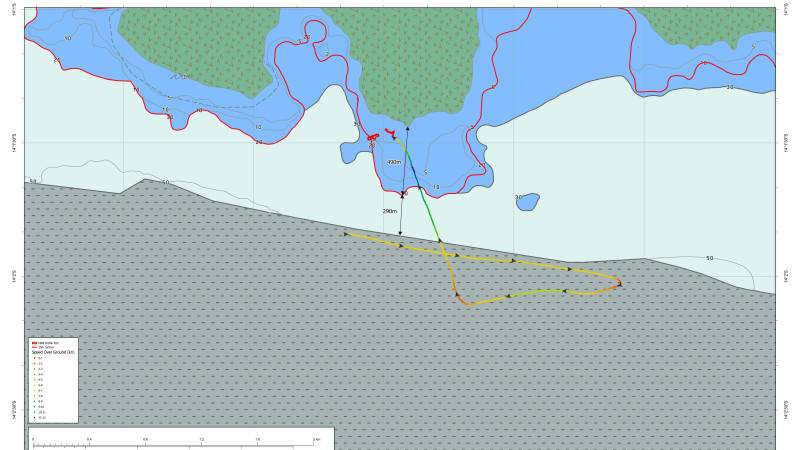Series of Human Errors Led to HMNZS Manawanui Grounding
HMNZS Manawanui grounded and sunk off the coast of Samoa as a result of human error, an interim Court of Inquiry report shows.
The Royal New Zealand Navy ship grounded on a reef on the southern side of Samoa, on October 5, 2024, while conducting survey operations.

Chief of Navy Rear Admiral Garin Golding stood up a Court of Inquiry following the incident. “The direct cause of the grounding has been determined as a series of human errors which meant the ship’s autopilot was not disengaged when it should have been,” Rear Admiral Golding said.
“The crew did not realize Manawanui remained in autopilot and, as a consequence, mistakenly believed its failure to respond to direction changes was the result of a thruster control failure.
“Having mistakenly assessed a thruster control failure, standard procedures should have prompted ship’s crew to check that the ship was under manual control rather than in autopilot. This check did not occur. Remaining in autopilot resulted in the ship maintaining a course toward land, until grounding and eventually stranding.”
Golding said why it happened and what would come next in terms of lessons learned were still being worked on as part of the wider Court of Inquiry, which was expected to be completed in the first quarter of next year.
He said given human error was identified as the cause, a separate disciplinary process would need to be commenced once the Court of Inquiry had concluded.
As well as the primary cause, there were also a number of identified contributing factors leading to the ship’s grounding, which will be considered in more detail during phase two of the Court of Inquiry.
“To provide some immediate assurance, we have conducted a series of audits in the Fleet and looked to implement initial lessons identified from the interim report around training, risk management, and improving relevant orders, instructions and procedures,” he said.
“I want to reassure the public of New Zealand that we will learn from this situation and that it is on me, as the Chief of Navy, to earn back your trust.
“We have incredible people within our Defence Force who answer the call to serve every day. Much of their work is risky and involves decisions that can mean life or death. No one turns up to work to have a bad day.
“In this situation, we thankfully did not lose any lives but lives have been affected nonetheless, and we continue to support and work closely with those who were onboard Manawanui on that day.”

Timeline:
On Saturday October 5, 2024, HMNZS Manawanui was conducting survey operations on the southern side of Apia, Samoa in a strong breeze of up to 25 knots and moderate swell.
The survey was conducted in a box-shaped area, running east to west in survey lanes that start on the outside, working inwards.
At about 6.15pm, the ship’s crew attempted a routine turn to starboard, initially to a course of 340 degrees, within the survey area, as part of a turn.
The crew attempted to turn off the 340 degree course to starboard towards an easterly course but the ship did not respond as intended.
Shortly after, Manawanui left the approved survey area, and in an effort to stop the ship, the crew conducted further actions that they believed should have resulted in the ship essentially braking.
Manawanui did not slow or stop, and instead the ship started to accelerate towards the reef, grounding for the first time at or about 6.17pm at a speed of more than 10 knots.
The ship then travelled around 635 metres (700 yards) before becoming stranded, grounding multiple times along the way.
Full control of Manawanui’s propulsion system was not regained until 10 minutes later, at 6.27pm, when the ship’s autopilot was disengaged. The inability to turn the ship to an easterly direction from the 340 degree course and stop the ship is attributed to the ship being in autopilot mode.
Unsuccessful attempts were then made to maneuver the ship off the reef.
Manawanui was brought to emergency stations after the grounding, and searches were conducted to check for damage.
No damage or flooding was detected inside the ship. However, stability assessments made after the grounding indicated Manawanui was no longer stable.
At approximately 6.46pm, about 30 minutes after the initial grounding, the decision was made to abandon ship.
The timeliness of the decision to abandon ship and to keep Manawanui’s generators running contributed to the successful abandonment process and likely prevented serious injuries or death.
The ship suffered a series of catastrophic fires after being abandoned, before capsizing and sinking on the morning of Sunday October 6.
